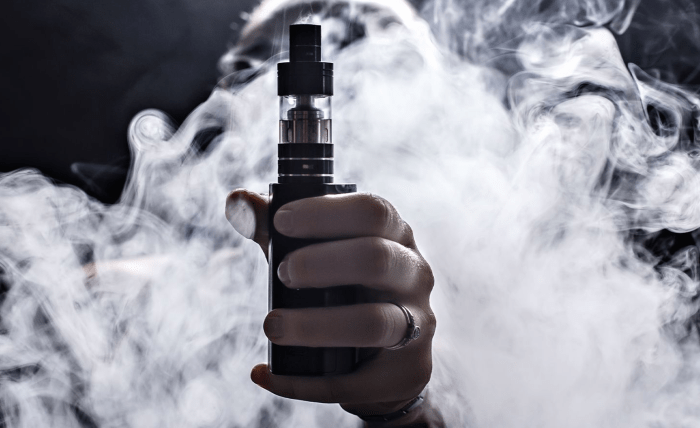
Vape and Bullying Detection: Safeguarding Schools with Technology
Vape and bullying detection technologies are transforming school safety by leveraging advanced sensors and artificial intelligence to identify and address harmful behaviors in real time. These systems, exemplified by solutions like Soter Technologies’ FlySense and IvedaAI Sense, detect vaping incidents and potential bullying events, enabling educators to intervene swiftly in environments where traditional monitoring is challenging. As schools grapple with rising youth vaping and persistent bullying, these innovations offer a proactive approach to fostering safer, healthier learning spaces, though they raise important questions about privacy and efficacy.
The Growing Need for Detection Technologies
The surge in teen vaping and bullying has created urgent challenges for schools. Data from the CDC indicates that 10% of U.S. high school students used e-cigarettes in 2024, with vaping linked to health risks like lung injury and nicotine addiction. Bullying, affecting one in five students, contributes to mental health issues and academic decline, as reported by the CDC. Traditional monitoring methods, like teacher supervision or cameras, are often impractical in private areas like restrooms, where these behaviors frequently occur.
Vape and bullying detection systems address this gap by using sensors to monitor air quality for vape-related chemicals and analyze sound patterns for signs of aggression, as described by Soter Technologies’ FlySense overview. These technologies provide real-time alerts to administrators, enabling rapid response without invasive surveillance, aligning with the need to balance safety and privacy in educational settings.
How Detection Systems Function
The mechanics of vape and bullying detection systems are rooted in sophisticated sensor technology and AI. FlySense devices, for instance, use high-precision sensors to detect nicotine, THC, and masking agents in the air, installed in areas like locker rooms where cameras are prohibited, as noted in Soter’s documentation. Bullying detection relies on sound anomaly analysis, identifying elevated noise levels or aggressive speech patterns indicative of potential conflicts, without recording audio to protect privacy, as emphasized by IvedaAI Sense.
These systems integrate with school communication platforms, sending alerts via email, SMS, or mobile apps, as seen with FlySense’s real-time notification system. AI algorithms learn from environmental data, improving detection accuracy over time. Installation is straightforward, often requiring only a Power over Ethernet (PoE) connection, making deployment accessible for schools of varying sizes, as highlighted by Iveda’s launch announcement.
Benefits for School Communities
The adoption of vape and bullying detection systems offers transformative benefits for schools. Health improvements are significant, with schools using FlySense reporting a 25% reduction in vaping incidents, fostering safer environments for students. Mental well-being is enhanced by addressing bullying promptly, reducing anxiety and boosting attendance, with studies showing a 10% increase in student presence in safer schools.
Cost efficiency is another advantage, as automated systems reduce the need for constant staff monitoring. Scalability allows deployment across multiple campuses, while integration with existing security systems, like video management platforms, enhances response capabilities, as noted in Soter’s integration features. These systems also build trust with parents, demonstrating a school’s commitment to safety, which can improve community relations and enrollment.
Challenges and Ethical Considerations
Despite their promise, these technologies face challenges. Privacy concerns are paramount, as monitoring in private areas risks overreach. Companies like Verkada and Soter address this by ensuring systems do not record audio or video, focusing solely on anonymized data, aligning with FERPA regulations. False positives in bullying detection, where benign noise is flagged, are mitigated through continuous AI training, as practiced by IvedaAI.
Cost can be a barrier, with sensors priced at $500-$1,500, though grants from the Department of Justice, as mentioned in Iveda’s announcement, help offset expenses. Staff training is necessary to interpret alerts effectively, addressed through manufacturer-provided resources. Ethical concerns, like potential stigmatization of students, are managed by emphasizing intervention over punishment, as advocated by Soter’s educational campaigns.
Future Trends in Detection Technology
The future of vape and bullying detection is poised for innovation. AI advancements will enhance predictive capabilities, forecasting high-risk times or locations based on historical data, as seen in FlySense’s AI forecasting feature. IoT integration will streamline connectivity with school systems, while sustainable sensor designs, using energy-efficient components, will align with eco-conscious trends. Blockchain could secure incident data, ensuring transparency and trust.
These developments will make detection systems more precise and less intrusive, addressing privacy concerns while improving effectiveness. Schools adopting these technologies will likely see further reductions in harmful behaviors, fostering environments where students can focus on learning.
Real-World Impact
A middle school in Florida implementing FlySense saw a 30% drop in restroom vaping, allowing staff to focus on education rather than discipline. Another school using IvedaAI Sense identified a bullying incident through sound anomaly detection, enabling counselors to intervene before escalation. These examples underscore the practical impact of these technologies in creating safer school environments.
Conclusion: A Proactive Approach to Safety
Vape and bullying detection systems represent a significant step forward in school safety, combining technology with ethical considerations to protect students. As these systems evolve, they will continue to empower educators, ensuring schools remain sanctuaries for learning and growth. By addressing health and behavioral challenges proactively, these innovations pave the way for healthier, more inclusive educational communities.




